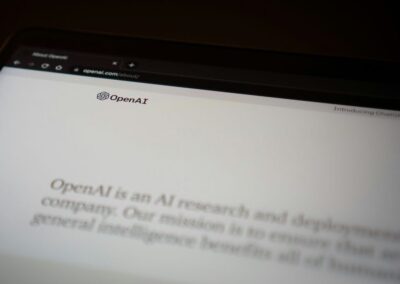Preventing Medical Errors: An SOS to Artificial Intelligence
It has been almost 25 years since the shocking landmark study from the Institute of Medicine “To Err is Human” (1999). It stated that preventable errors were responsible for up to 100,000 deaths in the USA each year. It was mind-boggling to imagine how much harm our well-intended health care system could inflict onto the public. Something had to be done to help us in preventing these avoidable medical errors…
…And something was done. Hundreds of performance standards have been implemented. Dozens of best practices have been developed and adopted in hospitals and clinics across the country. We have driven most clinical CMS Core Measures to almost 100% compliance. Prophylaxis programs for post-operative infection and VTE, as well as early sepsis recognition protocols are now the norm. “Never events” are publicly reported and strategies exist to minimize them. Pay for performance has become commonplace. I could list many more examples. Hospitals should be safer than ever. By all conventional wisdom standards, we should have made great headway against morbidities and deaths from preventable medical errors.
What a surprise in 2016 when the study done by Johns Hopkins in the BMJ estimated that more than 250,000 Americans still die each year from medical errors, making medical errors the third leading cause of death in the USA behind heart disease and cancer.
We Are Losing the War
Now in 2023, there have been studies from the CDC showing a 2-year decline in US life expectancy and a 2-year rise in maternal mortality in the USA. Adding insult to injury, an article in the NEJM earlier this year stated that a preventable event occurred in 6.8% of all admissions.
The estimated number of preventable deaths has essentially tripled in front of our very eyes. There has not been a great deal of media attention. I remain surprised by the lack of public outcry. Why aren’t preventable deaths front-and-center in the medical debate?
I reluctantly concede that despite our efforts, we are losing the war against preventable errors.
We need help. It’s time for something new… and fortunately help is here. It’s called a partnership with artificial intelligence, and putting AI to use in preventing medical errors.
Much has been written by me and others about the emerging technology of AI, especially in healthcare. It promises to revolutionize our industry in many ways. Specifically, I believe AI has some unique strengths that can assist our efforts in the reduction of preventable errors, not the least of which include tremendous speed and efficiency, as well as 24/7 service. It is with these strengths that we cement our partnership and attack the issue of preventable errors.
Preventing Medical Errors: Needed First Steps
Before we even consider a partnership with AI, there are two things we need to improve regardless (and immediately):
1. Enhance the Local Quality Improvement Processes
Before anything else, we must master the process improvement methodology. Every institution must develop a robust data analysis plan with the medical team. This must be done with a minimization of staffing resources—not an easy task, but AI can help significantly with this. The process must be automated with AI doing the lion’s share of this work including data extraction and the initial data analysis.
2. Develop More Applicable Quality Performance Indicators
We cannot manage what we cannot measure. The bottom line is achieving superior clinical outcomes. Therefore, the quality indicators that we develop and utilize in the future must continue the transition from process indicators to outcome indicators.
These indicators must also measure earlier stages of disease as opposed to our present hospital-specific measures that monitor conditions late in the disease process—which may not be preventable by that point. Prevention measures must play a greater role in the overall process.
Finally, these indicators must be stratified and more specific for ethnicity, culture, social class, and race, in order to make meaningful progress toward the goal of Health Equity.
Where AI Comes In
Once we have gotten a better handle on the quality process and their respective management indicators, we must optimize the role of AI in partnership with the rest of the medical team.
1. A more efficient operational infrastructure
As mentioned above, partnering with IT and the EMR, AI programs can help significantly with issues of data extraction and optimal coding. The speed and efficiency of well-designed AI programs will far exceed human capacity. Data extraction should be made almost automatic—and AI driven.
AI can also do the tedious work of examining every medical record for timeliness and accuracy. Data integrity is key to the validity of any future analysis. This process should have the added benefit of optimizing the revenue cycle, which will be very welcome throughout the organization.
2. Enhanced clinical databases, guidelines, and medical decision-making
Perhaps the greatest role for artificial intelligence lies in the areas of optimizing clinical databases and the development of patient-specific clinical guidelines. Over the years, huge databases have been amassed. We have no shortage of data, but a real shortage of data extraction across multiple databases, and subsequent analysis and meaningful information from that data.
Hence, the role of AI. With hundreds of millions of Americans in one database or another, the possibility of using large denominators to detect specific or clinically rare outcomes now becomes a reality. Unusual or non-described drug interactions, for example, can now be identified by looking at huge numbers of patients retrospectively. This is especially true when several drugs are taken by the patient.
Guidelines can now be developed that look at multiple medical issues simultaneously. For example, most current guidelines are single-disease specific, such as sepsis. How many patients, particularly in our hospitals, have just one disease? There may be aspects of a guideline that need to be adjusted in the presence of other concurrent medical conditions.
AI can accelerate the progress toward our ultimate clinical goal: individual patient best practices. As databases progress, AI will catalyze and accelerate the process of going from the descriptive (where we presently are) to the individual patient prescriptive. That process in itself should greatly contribute to preventing medical errors. And this is just the tip of the iceberg. As these are developed, significant progress will be made toward improved clinical decision-making.
3. The role of AI in accelerating health equity
Multiple recent medical studies have shown large discrepancies in care across social/economic/racial lines. A key management opportunity is the ability to examine large databases, in extreme detail, to ferret out these discrepancies on an individual patient level. But that requires a huge amount of time, and is perhaps not possible for a human workforce. As computing power continues to improve, the possibility of analyzing hundreds of millions of records will soon be possible. AI may be the very asset we need to make progress in this extremely important area.
Turning the Tides
Yes, I believe we are losing the war against preventable errors. However, I am very optimistic that teaming up with artificial intelligence will give healthcare the computing power and analytics to finally make progress and help us achieve our ultimate goal: Going from a KNOWN defect to NO defect.
As usual, I appreciate your thoughts and feedback.




